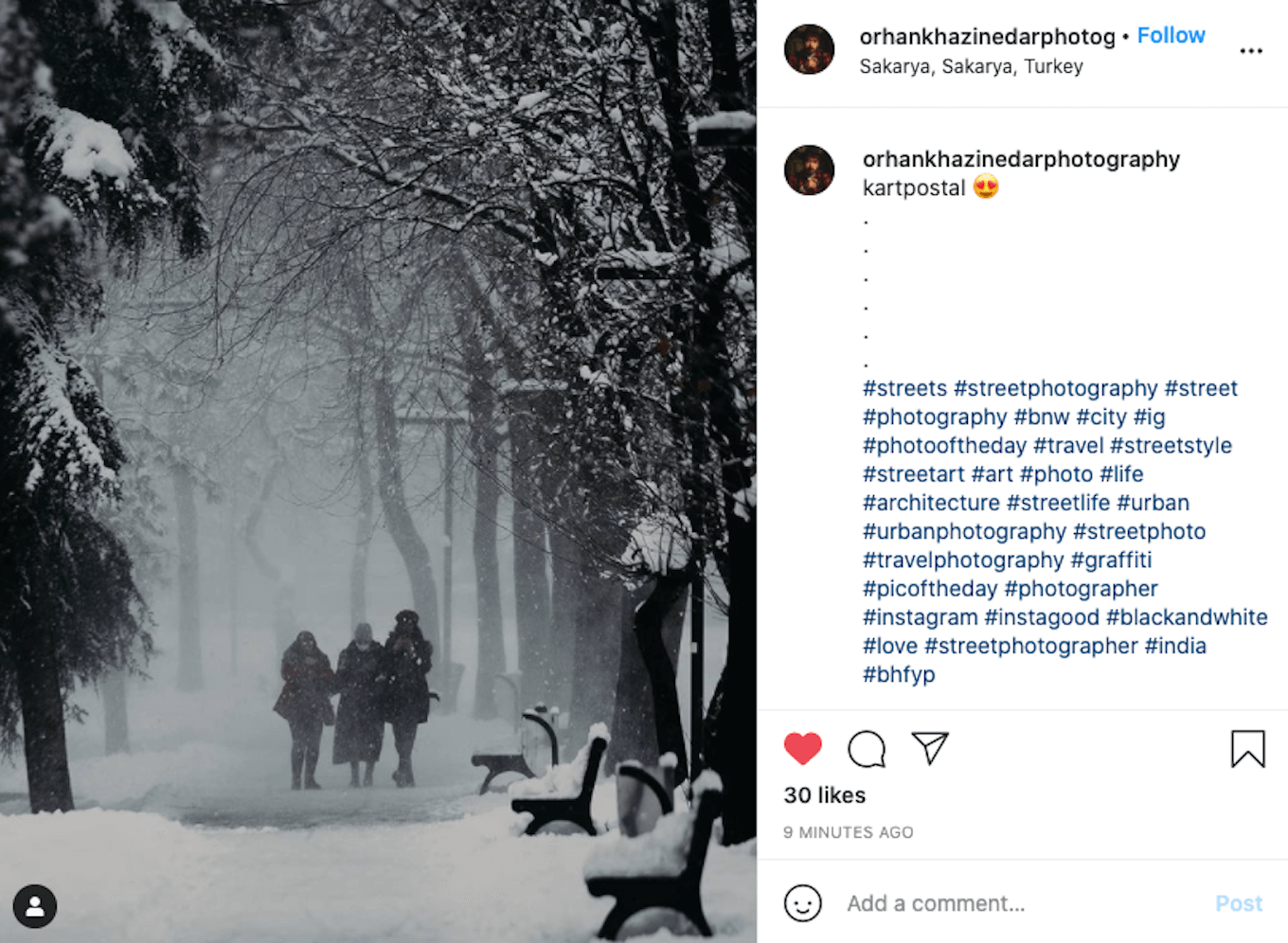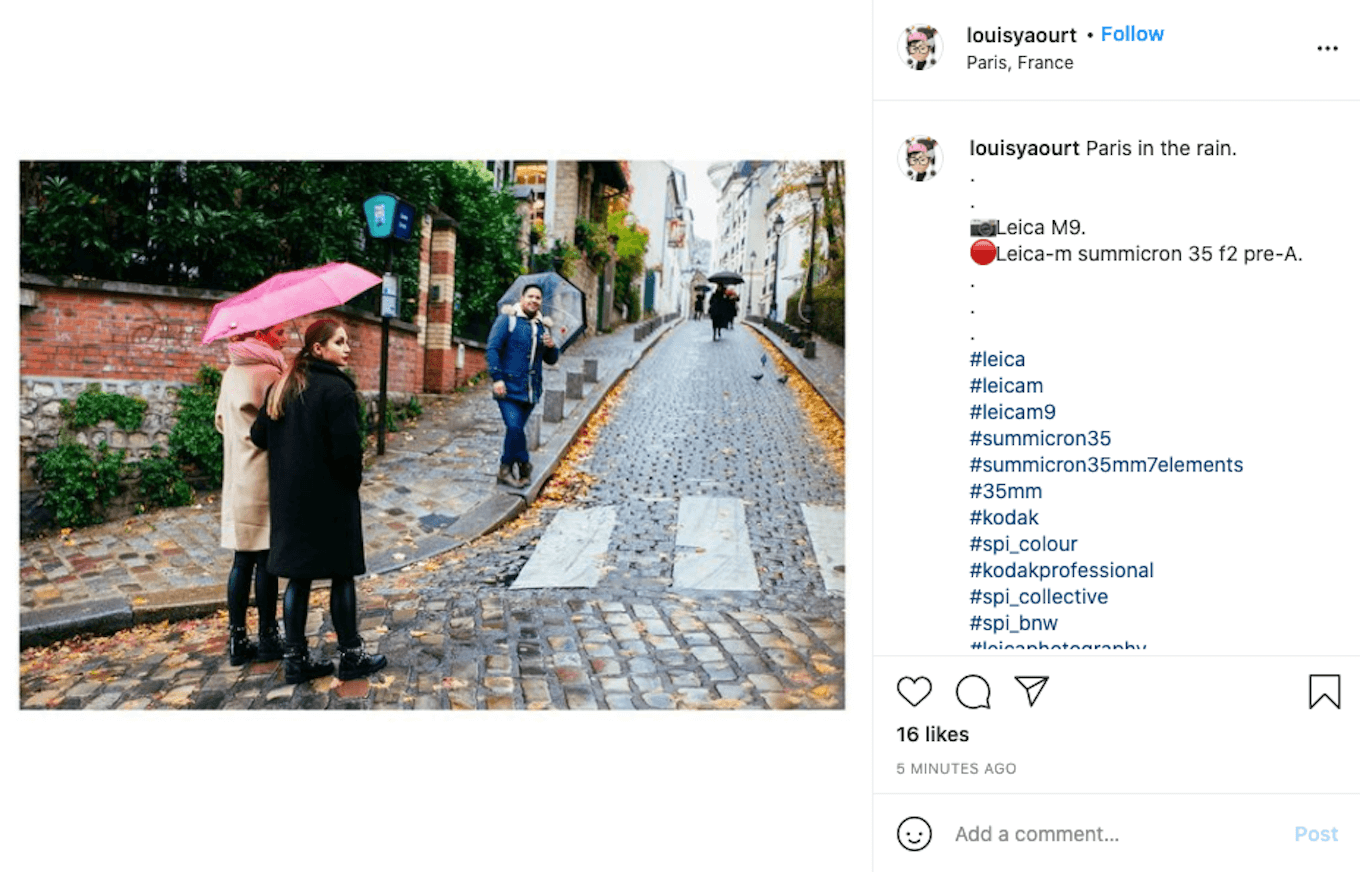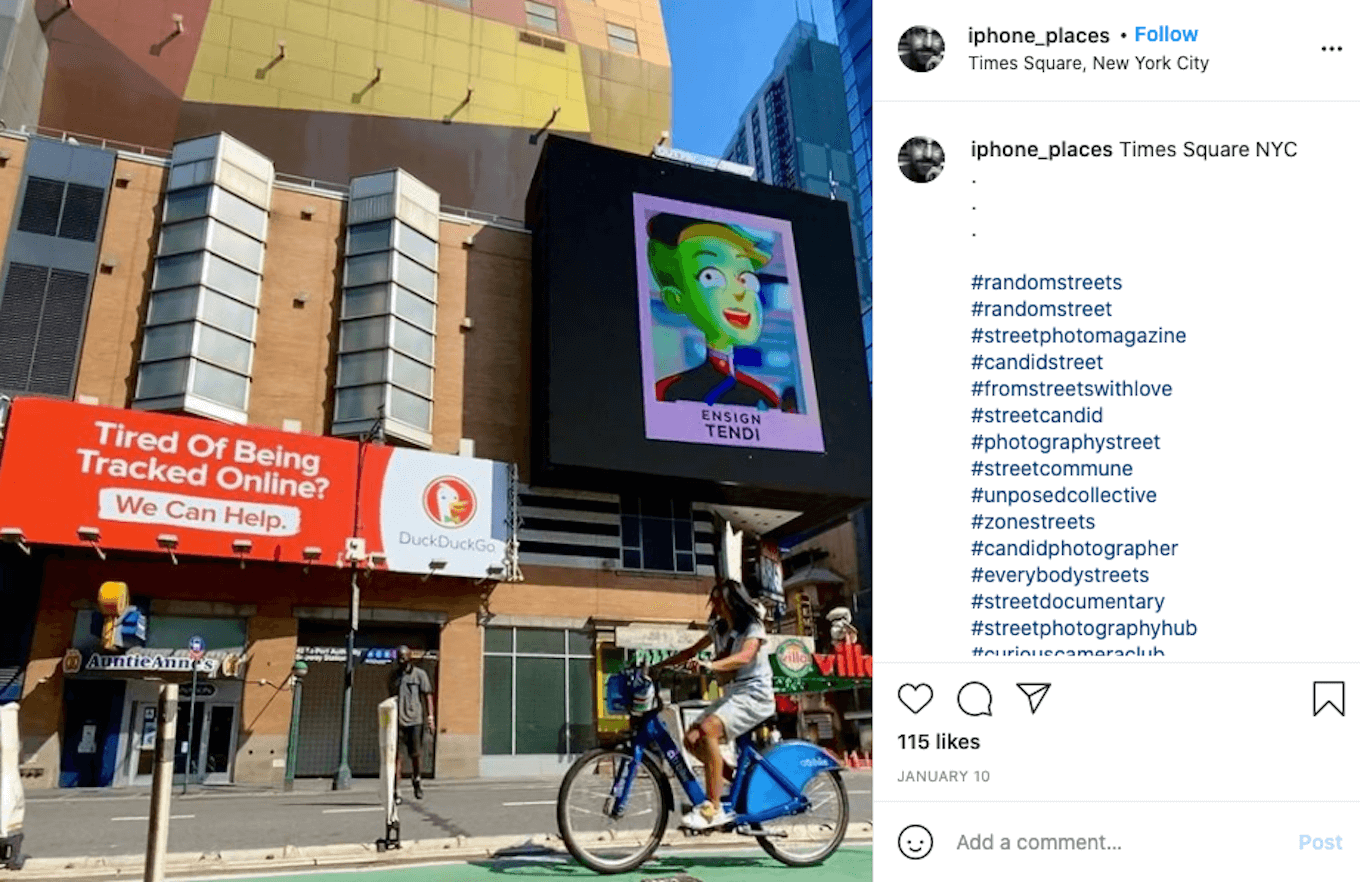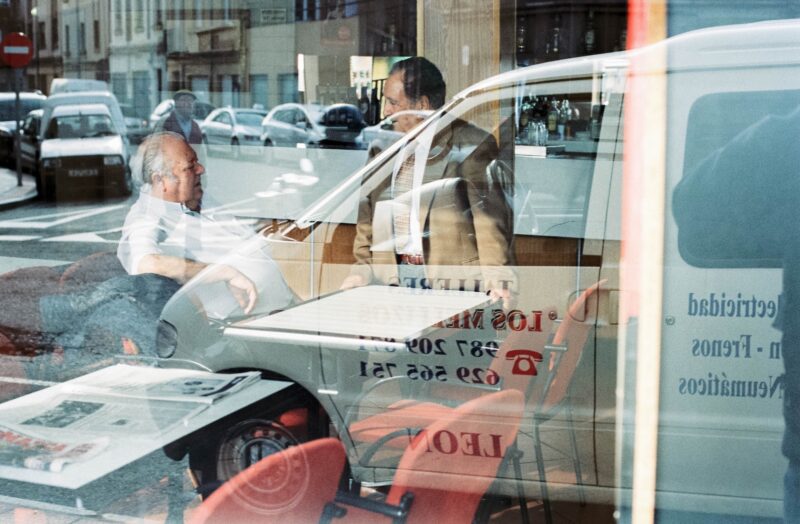Street photography is a unique form of self-expression and a great way to practice your technique as a photographer. Taking street photos allows you to develop your own personal style, as every street photographer sees the world a bit differently. To get started with street photography, all you need is your iPhone and a creative eye.
Understanding street photography
Street photography captures both mundane and unusual scenes in public places. It is often referred to as “candid” photography because, in many cases, people don’t even notice that they are being photographed. But street photography doesn’t always incorporate people. A good street photograph can also be a composition of lights, shadows, buildings, and vehicles combined in a way that tells a story or evokes emotion.
What is the point of street photography?
The goal of street photography is to create a mood, tell a story, or inspire discussion with a single image. A good street photograph is striking and unforgettable, allowing the viewer to step into the scene.
What makes a good street photo?
Street photography uses many elements of other types of photography, including portraits and landscapes. While many street photos may be considered candid, the images are still thoughtfully composed, taking advantage of light, lines, and shapes to portray the scene that is unfolding in front of them.
Is it okay to take pictures of strangers?
While the idea of taking photos of strangers makes many people uncomfortable, it is a widely accepted practice within the realm of street photography. Every photographer handles this quandary differently. Some will try to compose shots that protect the anonymity of their subjects. Others will ask permission after they take the photo to ensure that the dramatic impact of a candid shot is preserved. As a street photographer, you will have to develop your own moral code and draw a clear line that you aren’t willing to cross.
The top 5 rules of candid street photography
Are there rules that you must follow for candid street photography? Many of the standard composition rules apply to street photography, but we would argue that they should be considered starting points for developing your own personal style. Learn the rules so that you can effectively break them to create a more impactful image.
Rule 1: Choose your background carefully

The background of your photo can make or break a shot, no matter how compelling the subject matter. When practicing your craft, you may want to start by seeking out a remarkable background and waiting for the right subject matter to appear. Look for strong shapes and lines, simple colors, and interesting textures to use as a background for your shot. Murals, unique architecture, and leading lines all make interesting backgrounds for your street shots.
Rule 2: Capture movement within the scene
Capturing movement within your photograph will help tell a story and bring the viewer into the scene. A street scene is a captured moment in time, and showing movement gives the illusion that time is standing still for a brief period. You can capture movement simply by paying attention to what your subject is doing and pressing the shutter to freeze that moment, or you can introduce background blur to create the illusion of movement.
Rule 3: Pay attention to negative space when composing your shot

Negative space is the empty area surrounding your subject within a photograph. Too little negative space makes a photo feel busy and cluttered, while an optimal amount of negative space gives your viewer time to take in the scene without feeling rushed. The amount of negative space you introduce into your photos depends on your goal with the image. A stark scene in the midst of a busy city can be quite powerful, but reducing the negative space may give the image a chaotic feel, which can also have an impact.
Rule 4: Be respectful of the people you are photographing
We touched on photographing strangers earlier, and how you handle this is a matter of personal preference. What’s more important is that you photograph people respectfully and unobtrusively. If you’re caught in the act, smile and give a nod of thanks. If you are asked to delete a photo that you have taken without permission, do so without argument. Never use photos to exploit or hurt another human being. Instead, tell a story, express emotion, and create beauty.
Rule 5: Be patient, and the right moment will present itself

It may be tempting to wander the streets looking for that magical scene worth capturing, and while you’ll get more exercise with this technique, it won’t necessarily guarantee a great shot. A better tactic, especially when working in a busy urban environment, is to find the perfect location and wait for the right opportunity. Find an inconspicuous bench, curb, or stoop and pull out your phone. You will become part of the crowd as you wait for the perfect moment to snap your photo.
Shooting night street photography

Now that you have a basic idea of how street photography works, let’s get a little more advanced. Shooting night street photography requires all the same compositional elements and guidelines, with the added complexity of tricky lighting situations. Still, street photography at night can be very rewarding, as dark streets and artificial lighting create a unique atmosphere for capturing a moment in time. Here are a few tips for night street photography.
Tip 1: Use Night mode if you have it
iPhone’s Night mode is great at capturing details in low-light situations. It is currently available on iPhone 11 and later. On these models, Night mode turns on automatically whenever the camera detects low-light situations. It doesn’t work in total darkness, but it’s perfect for an image where there is limited natural or artificial light.
Tip 2: Highlight your subject with artificial light
One of the most challenging parts of night photography is using the small amount of light you have in ways that will highlight your subject without detracting from the overall scene. In many urban settings, you will have no problem using artificial light to your advantage. In other areas, light may be lacking, making it more difficult to get a sharp image. The good news: blurry shots can work really well when shooting street scenes at night.
Tip 3: Use a small tripod for crisp focus
For sharp night photos, you will need a way to steady your camera while taking photos. A small tripod is a great investment, and most models will fit in your pocket. As an alternative, you can lean against a sturdy post or poll or rest your elbows on top of a wall to reduce camera shake.
Street portrait photography with an iPhone
In many ways, shooting street scenes is much easier with an iPhone than with a camera. Society as a whole has become quite comfortable with being surrounded by phones, so most people will pass you by without so much as a second glance. Plus, iPhone settings are easy to use and adjust, and you probably always have your phone with you, even if photography isn’t the goal of your outing. Here are some tips for taking great street scenes with only an iPhone.
iPhone Tip 1: Use your volume buttons to snap a photo

Did you know that the volume buttons on the side of your iPhone double as shutter buttons when taking a photo? Using the volume buttons will help you hold your phone steady while taking a photo, and it’s much less obtrusive when trying to take photos without being noticed.
iPhone Tip 2: Use Burst mode to take a series of shots
When taking candid photographs, it can be difficult to get your composition just right. Burst mode allows you to take a series of photos and choose the one that works best. If you have an iPhone XS, iPhone XR, or an older model, you simply need to hold down the shutter button to take a series of photos in Burst mode. On newer models, slide the shutter button to the left and keep your finger on it to take Burst photos.
iPhone Tip 3: Use the frame grid to help with your composition
Need an extra visual tool for creating a compelling composition? Enable the grid on your Camera app. Not only will this help you get a straight horizon, but it’s also an effective tool for applying the rule of thirds and visualizing the placement of objects within your photo. Simply go to Settings > Camera and toggle on the grid.
iPhone Tip 4: Reduce the exposure for photos that are less grainy
The iPhone Camera app will sometimes try to overcompensate when taking night shots or shots in low light. To make your dark areas darker and less grainy, hold your finger down on the lightest part of the screen and move the exposure slider down to reduce the exposure.
How do street photographers take portraits with an iPhone?
When shooting street portraits with your iPhone, there are a few things you will have to consider. First of all, because iPhone portraits require you to be closer to your subject than candid street photography, you will likely have to ask for consent.
Explain to your potential model that you are practicing street photography, and provide a reason why you would like to photograph them. For example, “I just love the way your jacket stands out from the surroundings. Would it be possible to take your portrait?” As long as you are respectful and polite, you will likely get a yes. If the answer is no, thank the person and move on.
As we mentioned earlier, iPhone portraits require that you be close — within six to eight feet of your subject — for the best results. Plan your composition prior to approaching your subject so you won’t take up too much of their time. Pay attention to the colors, too — sometimes, a black-and-white portrait will work best; other times, the way colors interact in the shot will make it more interesting.
Ready to get outside and start practicing your street photography? All you need is your iPhone and a sense of adventure to start your street photography journey.



